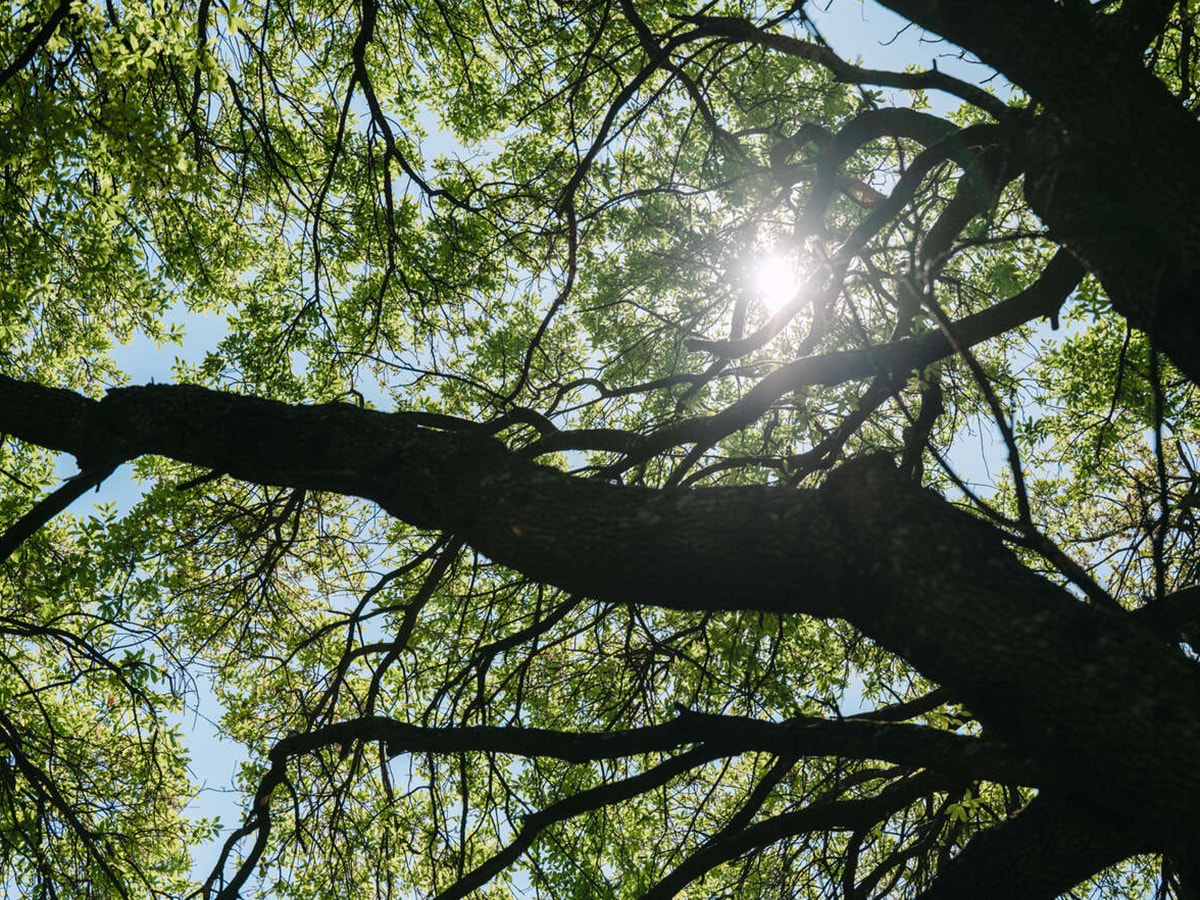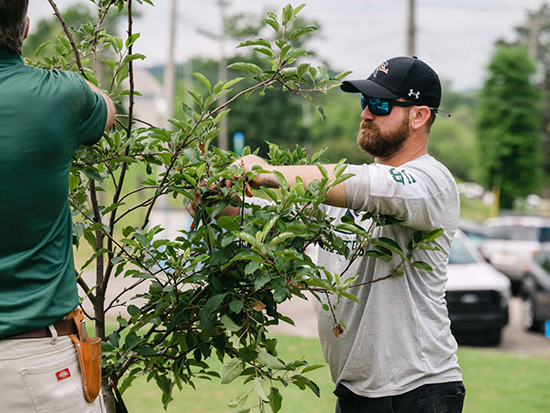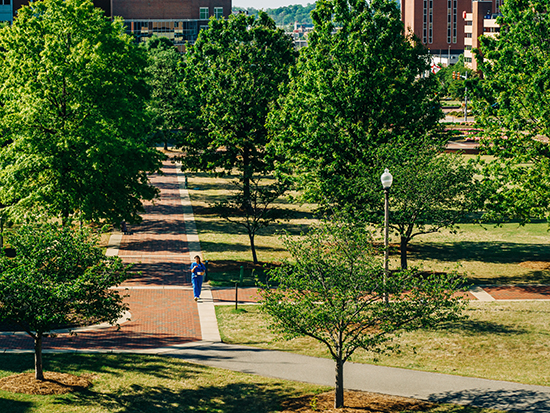 Green looks good on the University of Alabama at Birmingham campus.
Green looks good on the University of Alabama at Birmingham campus.
For 11 straight years, the National Arbor Day Foundation has recognized UAB as a Tree Campus USA. The recognition is for UAB’s work to plant and care for the more than 4,400 healthy trees on campus, while engaging students and employees in learning about and preserving them.
UAB has been honored for the past six years with the National Arbor Day Foundation’s Tree Campus Healthcare designation. The national recognition program celebrates health institutions that make a mission-aligned impact on community wellness through tree education, investment and community engagement.
The university’s urban forest is managed by the UAB Facilities Division, which maintains data on its trees: An ongoing project includes collecting details on the more than 17 genus and 24 tree species currently across campus. Students played an important part in helping identify and maintain data on the trees. In fall 2022, students from an interdisciplinary course in public health within the Honors College’s University Honors Program worked to update the tree inventory, cataloguing nearly 70 percent of UAB’s current tree population.
UAB is proud to maintain its Tree Campus USA designation, says UAB Campus Planner Chelsea McGimpsey in UAB’s Planning Design and Construction division, and remains committed to the responsible, long-term care of its urban forest.
Implementing GIS for tree management
One new way UAB is doing that is by using GIS, or geographic information systems. GIS is a technology used to create, manage, analyze and map all types of data. It has many uses in urban forestry and natural resources management, combining geographic data like maps with descriptive information like tree species, size or health. Since GIS was implemented for tree management at UAB in 2024, detailed records have been collected on more than 2,540 trees, spearheaded by the university’s Senior Arborist Scott Thompson, says Grounds and Campus Services Manager David Lovell.
 “A little over a year ago an investment was made in the Grounds Department to acquire the tools that we needed so that we could have accurate data,” Lovell said. “Scott has worked relentlessly, with the help of the GIS team Spence Henderson and Andrew King, to collect historical data that would otherwise be lost over time. This adds an element of timelessness to what we are doing and adds meaning to our work.”
“A little over a year ago an investment was made in the Grounds Department to acquire the tools that we needed so that we could have accurate data,” Lovell said. “Scott has worked relentlessly, with the help of the GIS team Spence Henderson and Andrew King, to collect historical data that would otherwise be lost over time. This adds an element of timelessness to what we are doing and adds meaning to our work.”
By leveraging technologies such as GIS, the team can map every tree on campus and record data on species, age, size and maintenance history, McGimpsey says.
“This allows us to monitor tree health over time, track treatments and assess environmental and economic benefits to the campus community,” she said. “Ultimately, it allows us to manage our trees individually and to take a comprehensive, campuswide approach to urban forestry.”
GIS allows UAB to track tree type, genus, species and health; measurements like diameter, height and crown height; and individual photos and inspection records. UAB has added a new tracking category for notable trees, which currently includes around 20 entries such as memorial and heritage trees, Japanese maples, live oaks and other trees with historic or cultural significance.
“Over time, this enables us to monitor tree health, treatments and changes, and once the full inventory is complete, we’ll be able to calculate the economic and environmental benefits of UAB’s urban forest,” McGimpsey said. “GIS is being used to track fertilization, trimming and other treatments, as well as the historical locations of removed trees.”
 The value of shade
The value of shade
UAB’s campus is spread nearly across the entirety of Birmingham’s Southside. In the past, green spaces have been overlooked in urban areas, but one of the foundations of UAB’s current Strategic Plan is environmental stewardship, says Bambi Ingram, manager of UAB Sustainability.
“Anyone who has been outside in an Alabama summer knows the value of shade,” Ingram said. “Trees provide so many environmental and health benefits for the community, from lowering air temperatures and reducing soil erosion to filtering pollutants such as ozone from the air we breathe.”
Campus construction is a constant, but UAB has created a process to preserve tree growth while accommodating new buildings and updates. UAB Facilities evaluates and estimates the value of the trees’ contributions to the campus ecosystem. Throughout its life, a single tree can generate thousands of dollars’ worth of air-pollution control, erosion control and recycled water. Each tree has been assessed for value, based on age and location. If a tree or group of trees must be removed during construction, new trees that provide similar contributions must be planted at the site. If that is not possible, then the equivalent dollar amount is added to the Tree Replacement Fund, which supports the management of UAB’s urban forest.